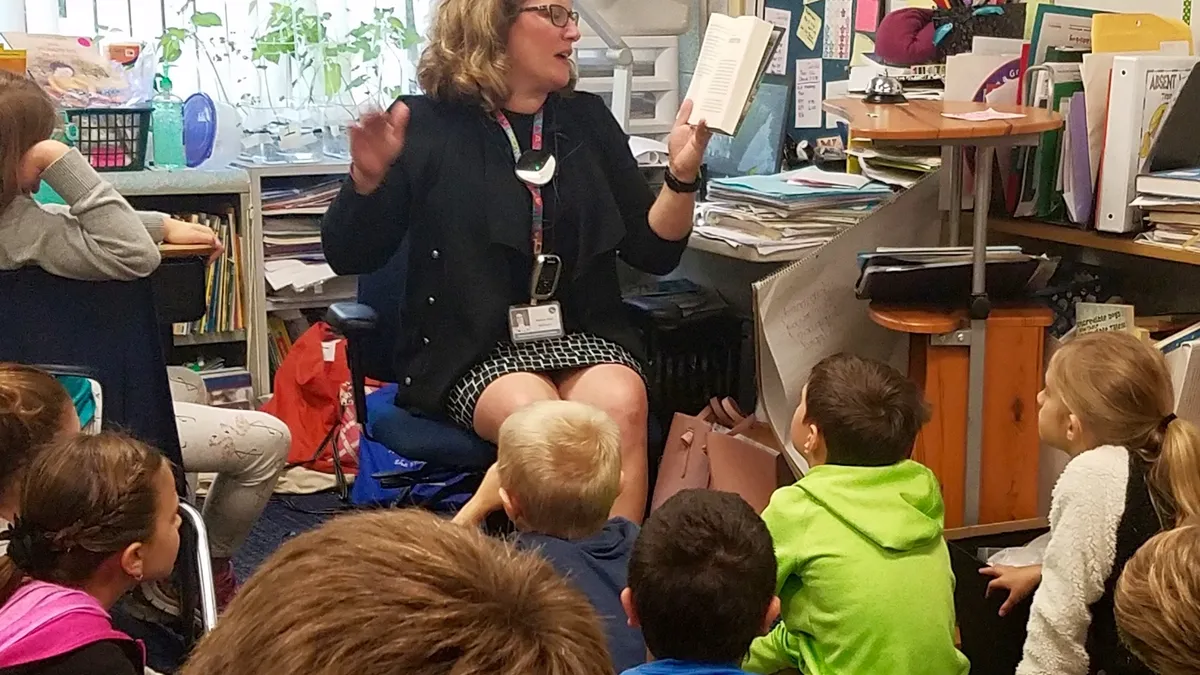Shannon Gilfeather is special education teacher at Salk Middle School in Spokane, Washington.
When a student appears to be inattentive, it’s easy to say, “Listen up” or “Pay attention.” However, it may not be that easy for the student to do so.
Some studies report that people’s attention spans are shrinking. Others say they are simply evolving and becoming more selective. Researchers theorize that these may be the effects of the mobile revolution and an increasingly digitized lifestyle. Since technology is here to stay, how can we help students improve their focus and attention so they are ready, willing and able to learn?
Listening and learning
Attention is the ability to focus on information and tasks while ignoring distractions. In a typical classroom, students are expected to pay attention to the teacher for extended periods of time. According to the International Listening Association, 45% of a student’s day is spent listening, and students are expected to acquire 85% of their knowledge through listening. Effective listening, therefore, is critical to academic success.
Understanding attention spans
What is a normal attention span? That depends on what a child is expected to pay attention to. Tests and diagnostic tools can help us understand attention spans, but they measure different things.
- Focused or sustained attention is the brain’s ability to concentrate on one specific task for a continuous amount of time without getting distracted. An example would be reading a book or watching a movie.
- Selective attention is the brain’s ability to choose only one subject to focus on when presented with many stimuli or choices. An example of selective attention would be concentrating on a conversation with a friend while watching a soccer game.
- Alternating attention is the brain’s ability to move back and forth between tasks that may have different cognitive demands. An example of this would be taking notes in class while listening to the teacher talk.
Many attention span formulas show ranges depending on a child’s chronological age. Some say a normal attention span is 3 to 5 minutes per year of a child’s age. Using this formula, a kindergartner should be able to concentrate on a task for at least 15 minutes. Other ranges are broader, with gains of 1 to 5 minutes of attention for each year of a child’s age. While there is not a perfect science to these formulas, the following chart provides some basic guidelines.
Of course, it is important to note that all children are different, which means that their attention spans develop at different rates. If they are struggling with attention deficit hyperactivity disorder or other conditions that may impact their focus and attention — such as autism or auditory processing disorder — these guidelines may not apply. If a child’s attention span becomes a concern for a teacher or parent, it is important to seek diagnostic help and treatment recommendations from a specialist.
Building listening skills
Whether students are on pace with attention span formulas or are working with a specialist to improve their attention, building their listening skills is important work.
Here are several ways to help students develop better listening skills and attention spans.
- Teach students to listen with their whole body. For elementary school children, toys such as Mr. Potato Head can be used to demonstrate how to listen with every part of one’s body — eyes are looking at the teacher or speaker, both ears are ready to hear, and mouth is closed and quiet. “The Biscotti Kid” video from Sesame Street is another helpful resource to teach young children to listen with their whole body, not just their ears.
- Read to students — or ask students to read passages aloud — and ask open-ended questions about the story. Demonstrate that you are carefully listening to their answers. Follow up with questions about their responses to help them extend their thinking and sharpen their focus on the topic. Also, try not to interrupt or rush students, or jump in to answer for them. Let them process their thoughts and communicate on their own.
- Pair up classmates for partner conversations about engaging topics. This is not only a fun way for students to practice active listening, but it’s a quick way to informally gauge their focus and listening skills.
- During small group instruction, play a storytelling game where every student takes turns adding one word or phrase to a story. Everyone has to be listening and paying attention so that their contribution makes sense.
- Try a series of quick physical exercises or movements like hand gestures to help students’ bodies wake up so their brains are better able to focus. Even a quick game of “Simon Says” or “Follow the Leader” can get students moving — and help them work on focus and listening comprehension.
- Build foundational cognitive skills. Many children who have trouble with focus and attention do not process information efficiently, which can impede their listening, reading and learning. The neuroscience-based Fast ForWord program is a helpful intervention for targeting these core areas of weakness, starting in the brain. By improving cognitive skills such as attention, memory and processing speed, the program addresses the underlying difficulties that keep students from paying attention and making progress.
- Talk about listening skills and focus. For older students in particular, discuss the differences between hearing and listening, and verbal and nonverbal communication. Highlight the importance of communication skills for college and career readiness.
The importance of listening
Students’ listening skills play a role in almost every aspect of their lives — from their education and behavior, to their relationships, to their readiness for college and careers. Like focus and attention, listening skills can be improved over time — and there are many ways teachers can help.












